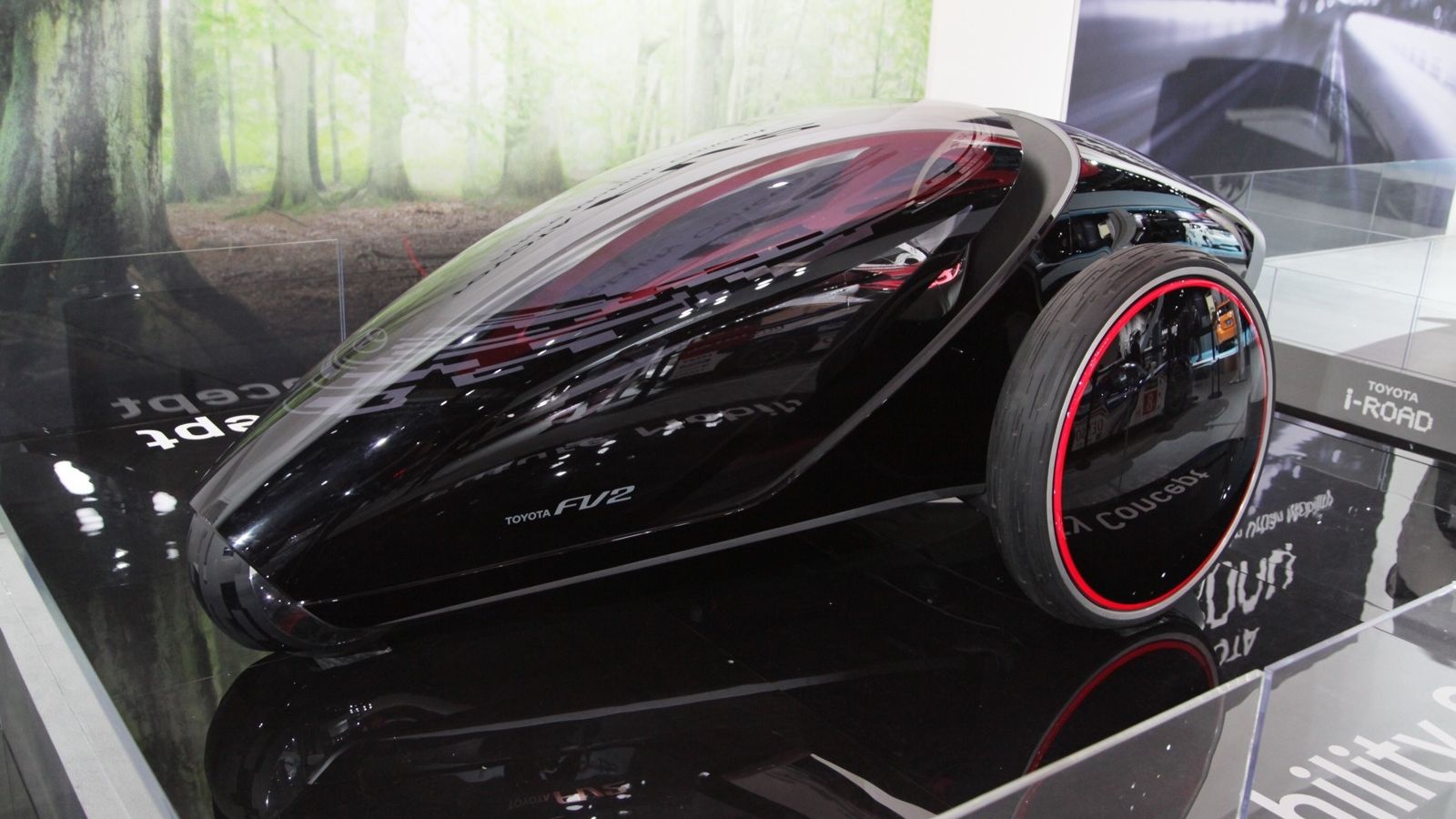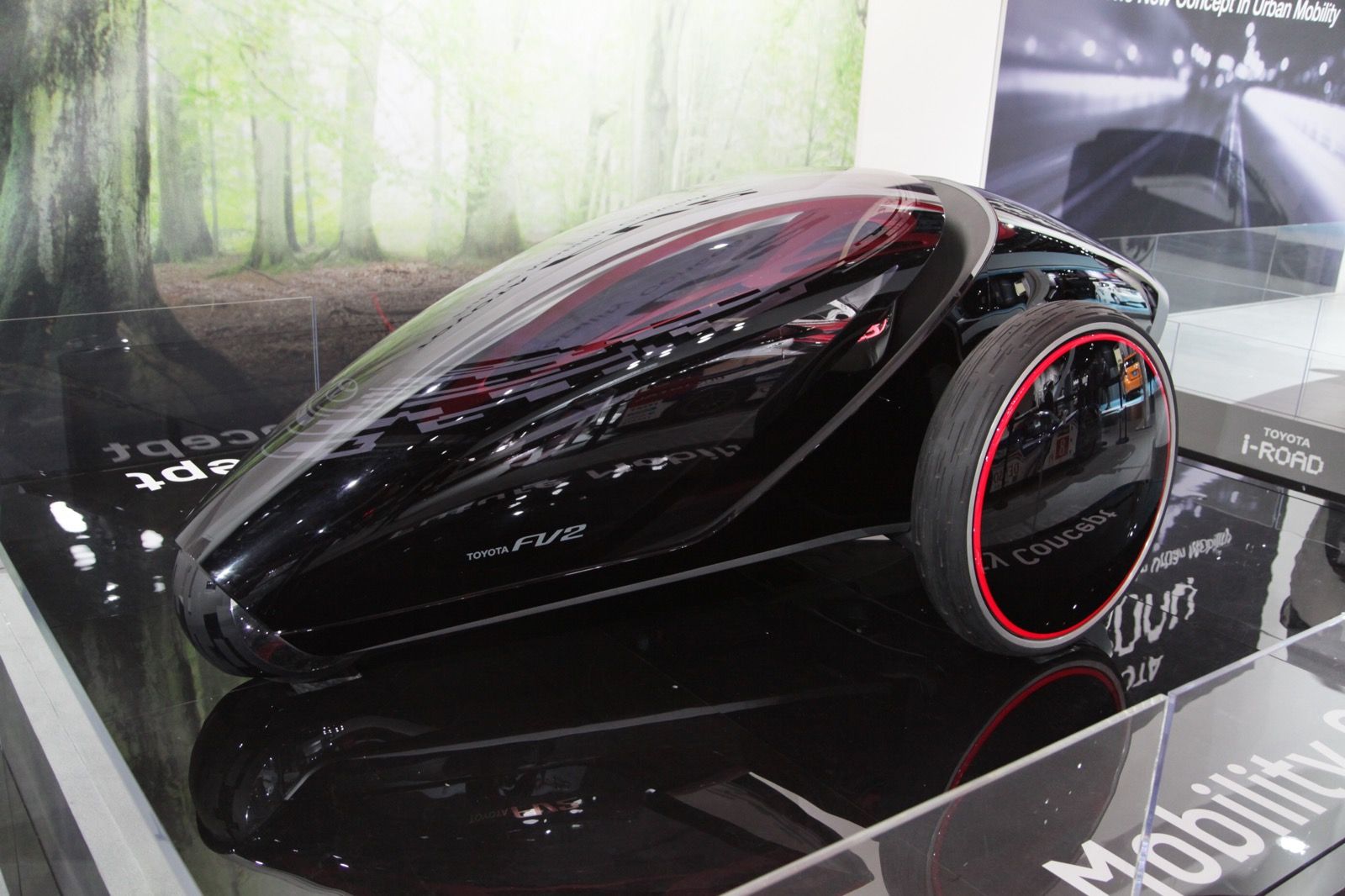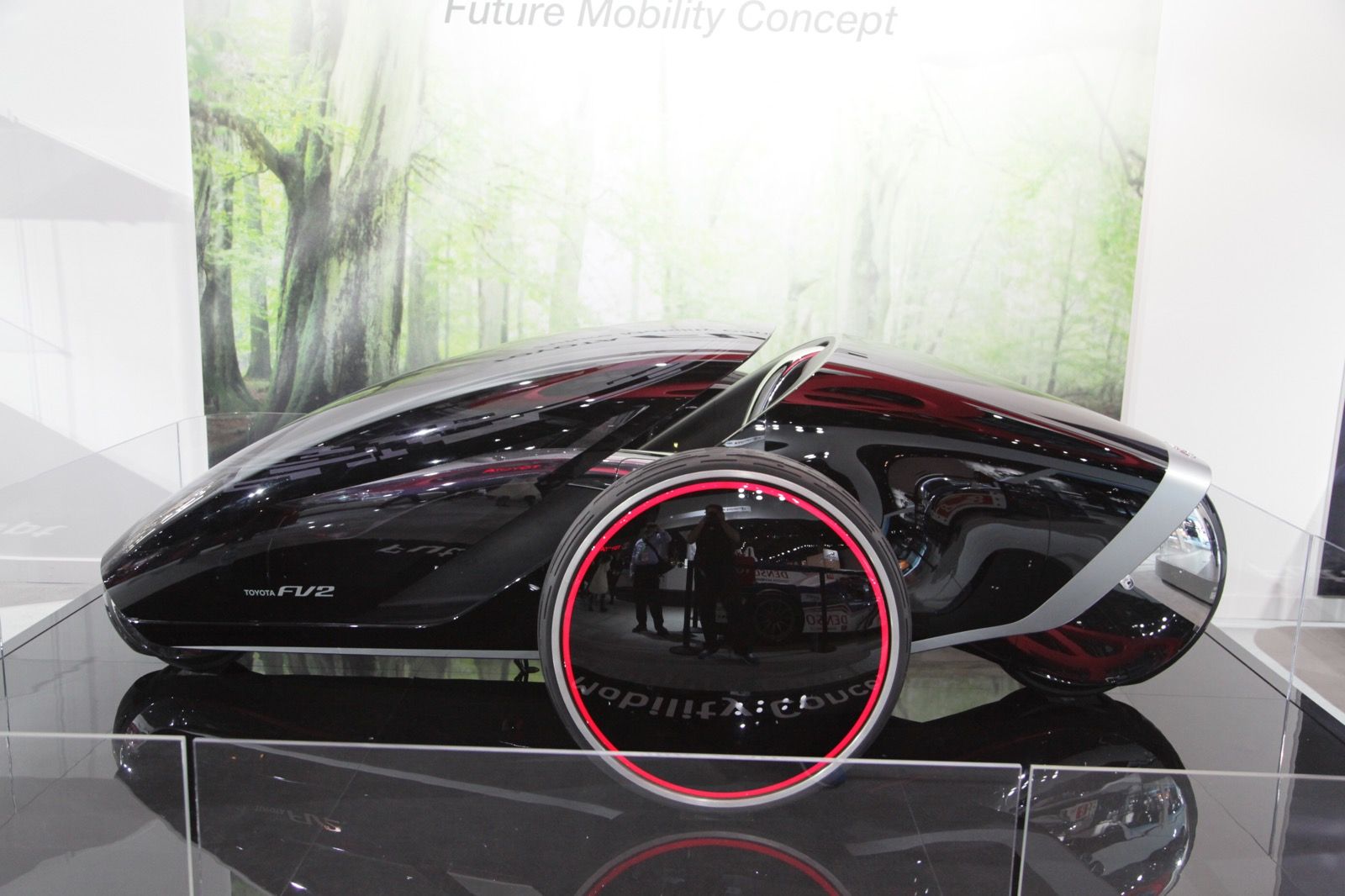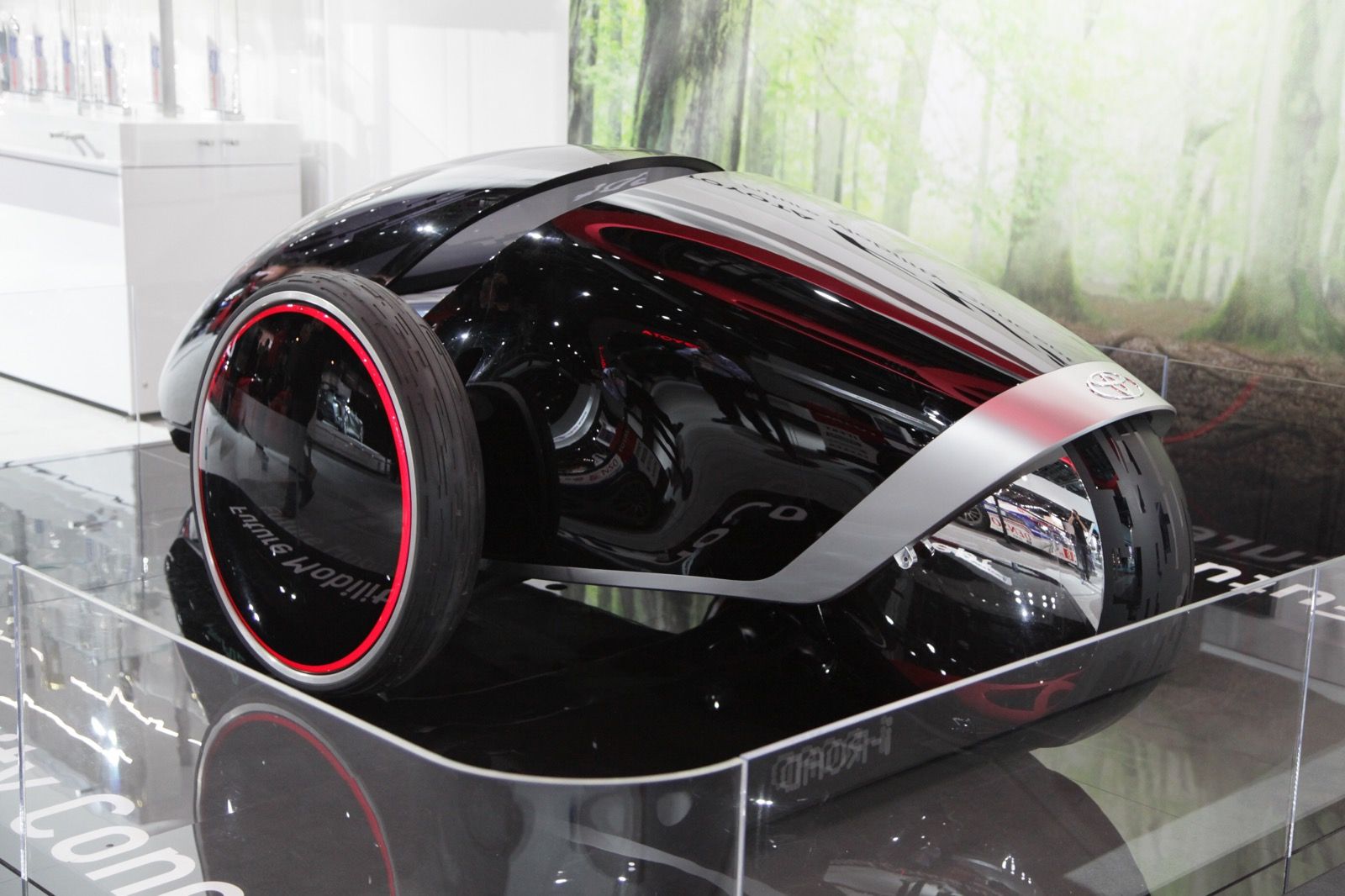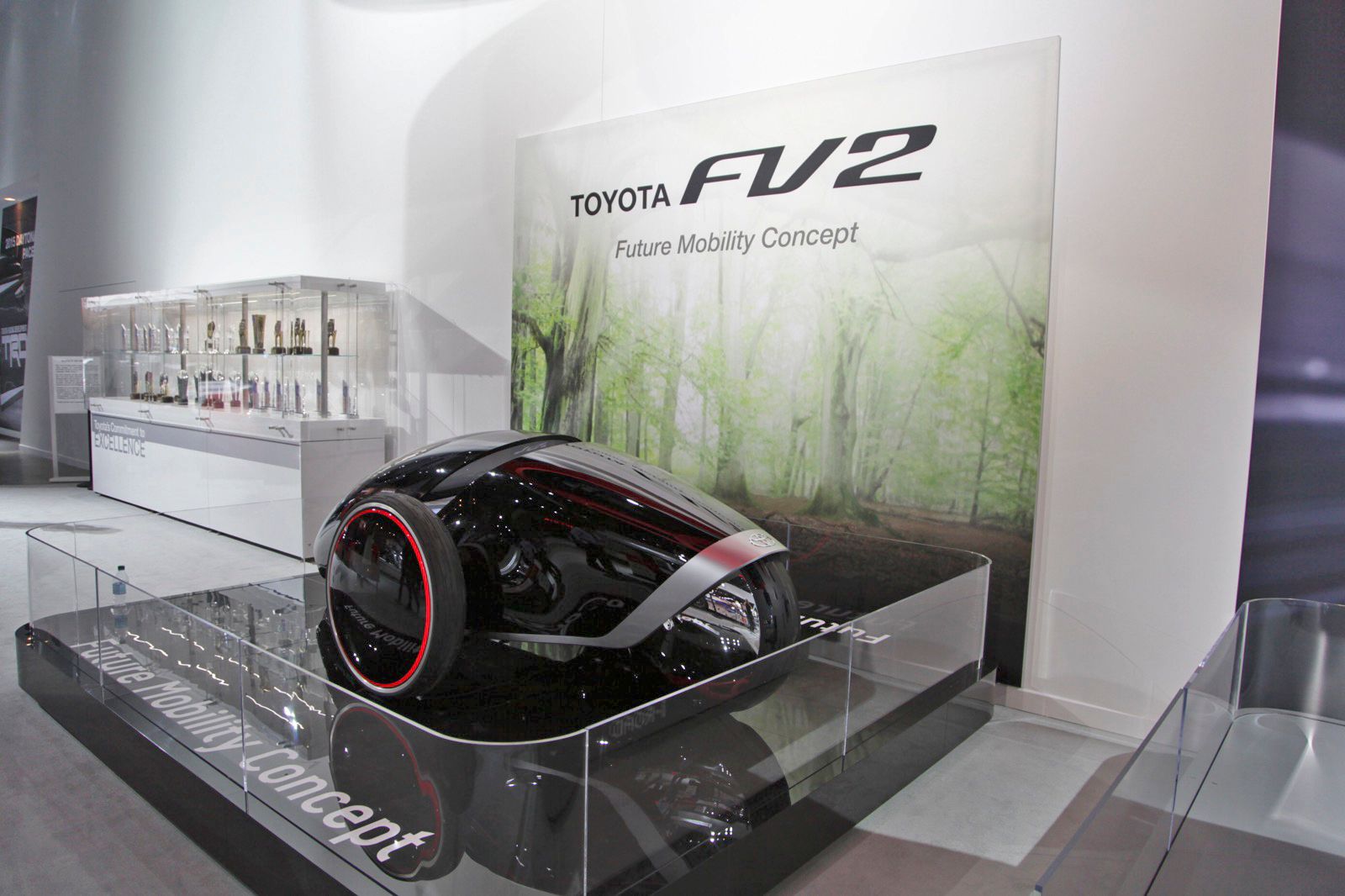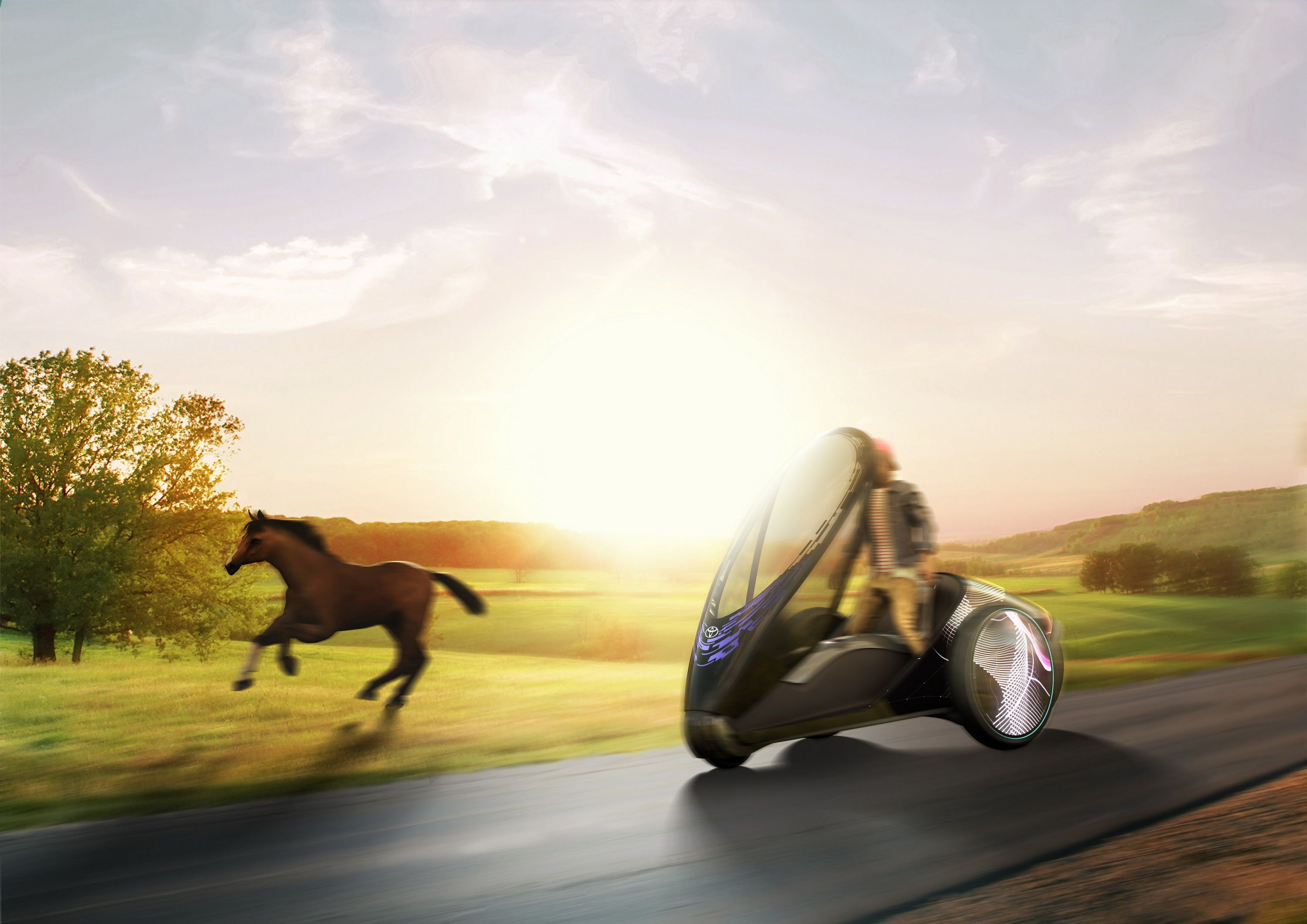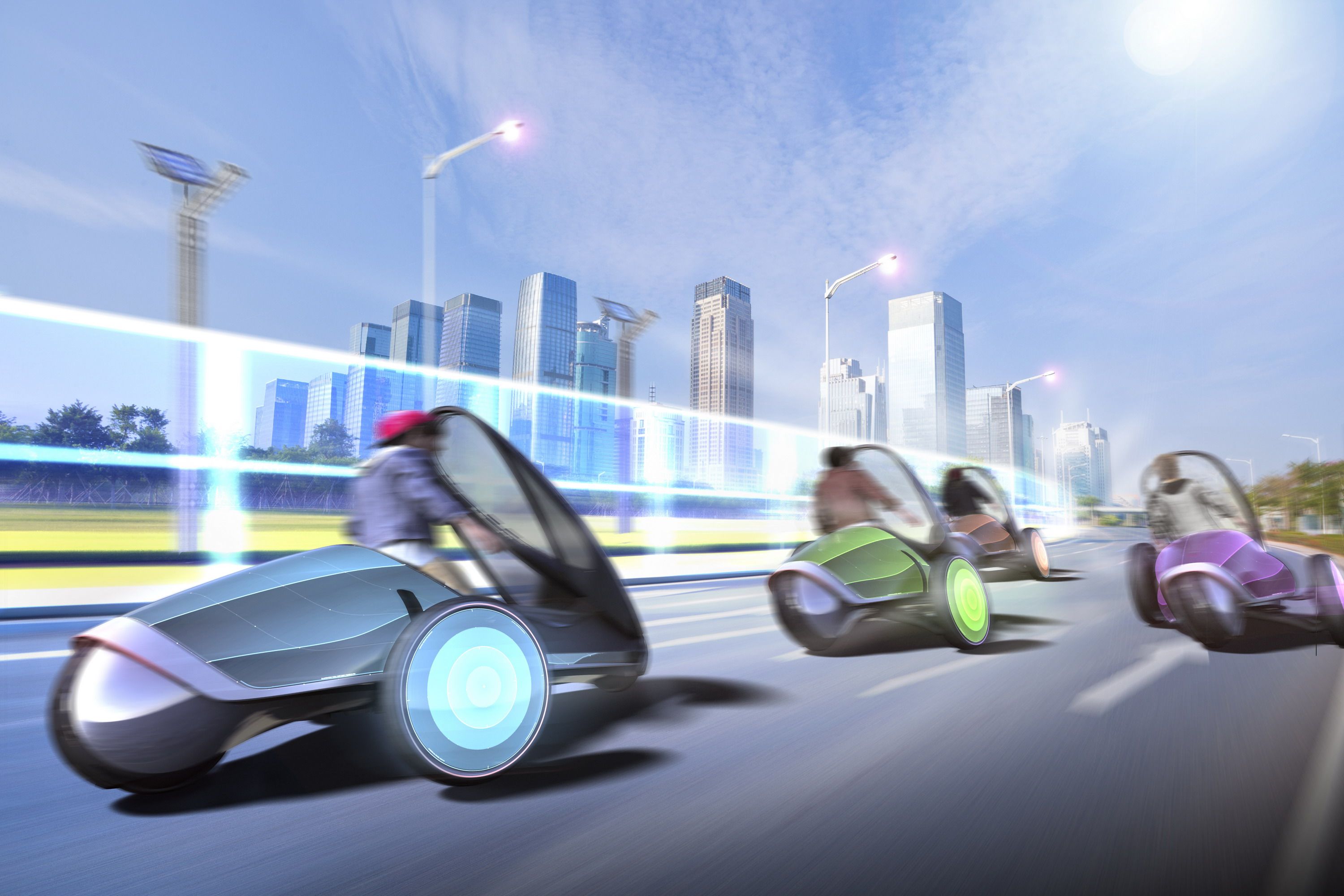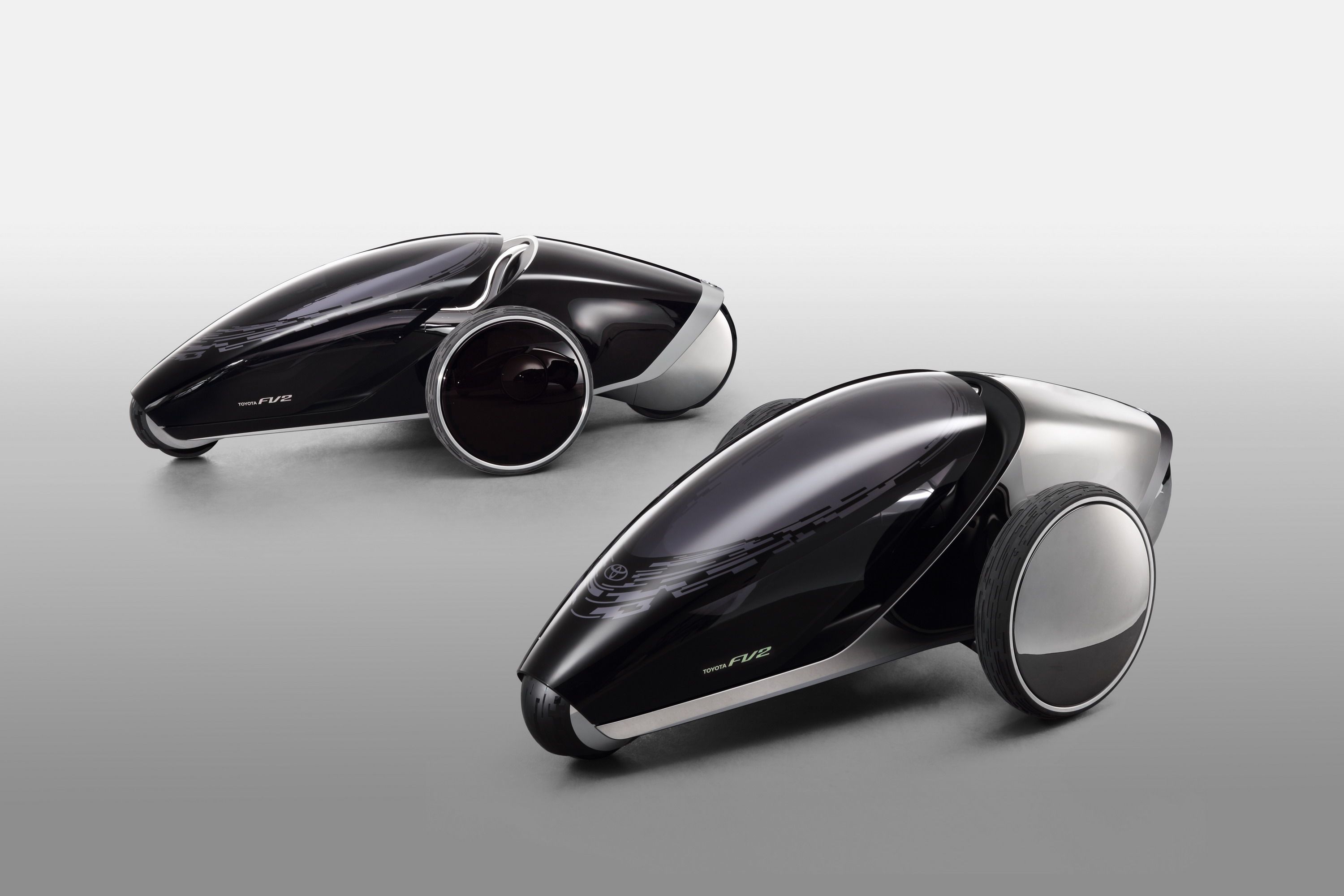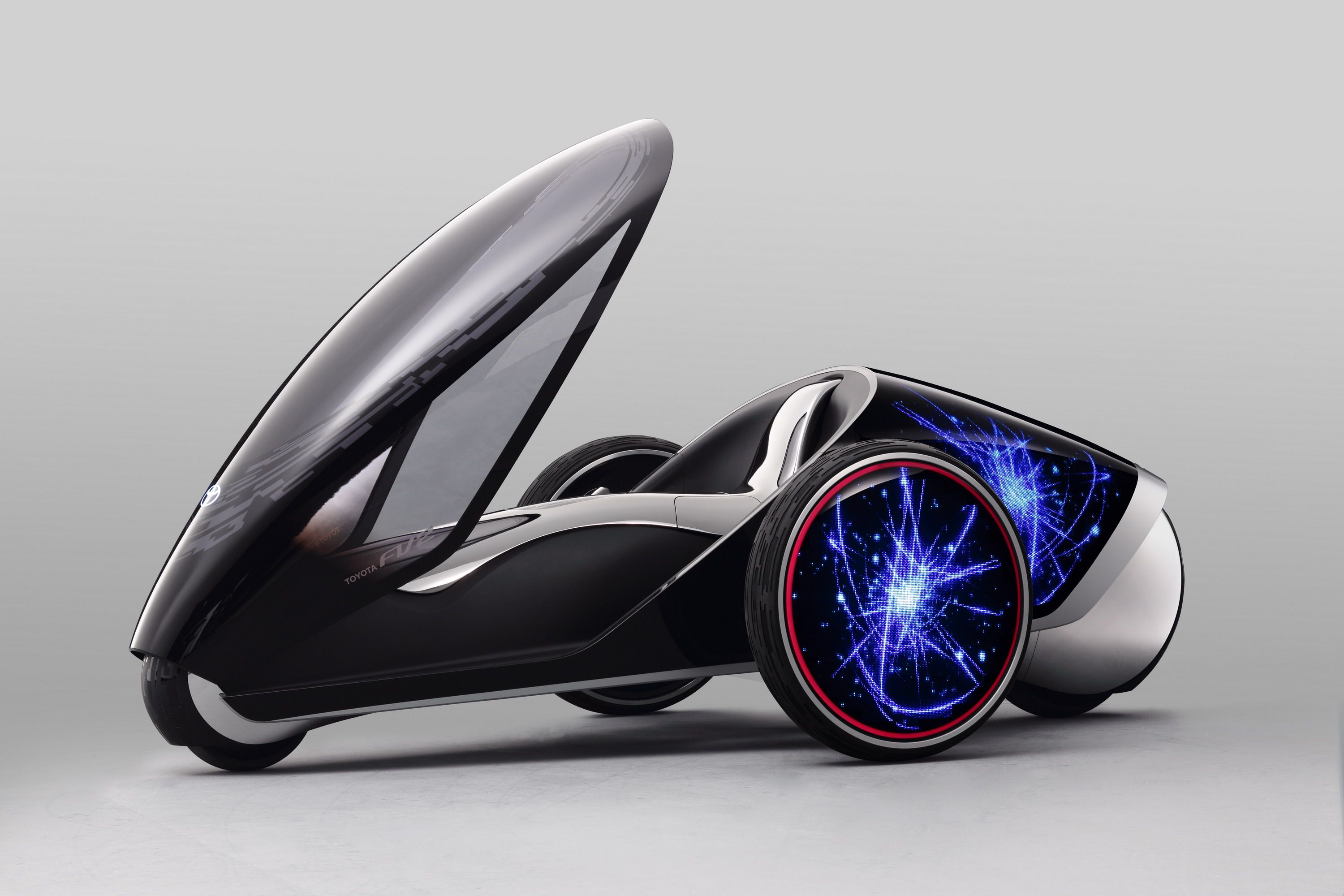After making its original debut at the 2013 Tokyo Motor Show,->ke1834 Toyota’s->ke88 FV2 concept has put on a world tour in the last few years, including stops at the Geneva Motor Show->ke228 and Detroit Auto Shows.->ke222 Even though this wild-looking, four-wheeled, super-sleek transportation pod is just a concept, it’s making the rounds as a product specifically designed to win over the public through sheer charm.
As an evolution of Toyota’s 2011 Fun-Vii concept, the FV2 (or “Fun Vehicle 2”) is meant to exemplify the Japanese carmaker’s “fun-to-drive” philosophy. It’s intended to enhance the relationship between a vehicle and its pilot, thus nurturing “aspects of trust and understanding, similar to those a rider will have with a horse.”
The FV2 is part of Toyota’s Heart Project, a line of research intended to create an emotional connection between humans and artificial intelligence. The Kirobo and Mirata communication robots are also part of this project, with the former making a trip to the International Space Station in August of 2013.
Using the FV2 as a concept platform, Toyota hopes the project will one day allow interactions between machines and humans that transcend simple commands and action through the use of expressions, gestures, and recollection of past events. Therefore, the FV2 was designed to learn as it is driven, picking up on the driver’s moods and habits to solidify its bond with the pilot.
This vehicle is every bit an expression of personality as it is a tool for transportation. While many fret over the possible disconnect presented by technology like autonomous vehicles, Toyota looks to forge ahead to a more connected future.
Click past the jump to read more about the 2014 Toyota FV2.
toyota-fv2
- Make: Array
- Model: toyota-fv2
2014 Toyota FV2
- Make: Array
- Model: 2014 Toyota FV2
Exterior
With one wheel in the front, two wheels in the middle, and a fourth wheel in the rear, the FV2 is more an ultramodern quadricycle than a car. A large windshield pops up from the main fuselage, enabling ingress by simply as stepping onto a platform. Overall, it’s quite a small package, which should be great for the over-cramped urban settings of the future.
Practically every surface on the FV2 is an electronic display, which enables the curved exterior to instantly change color. Toyota says that hues can shift to reflect the mood of the pilot.
It is certainly a diversion from the norm, but somehow, it’s a concept that doesn’t look as impossible as you might expect at first glance. The more you look at it, the more it makes sense. No, it’s not something you should expect to pick up at your local Toyota dealership any time soon, but as an overall idea it’s not really that out of line with modern technological progression.
It’s a small, single-person vehicle, and while you could argue that it is far more focused on form than function, it doesn’t look any less practical than a modern motorcycle. In fact, I’d be so bold as to say that it looks like it could actually work, in a several-decades-from-now kind of way. Although, it would be nice if there was at least a railing or something to hold onto.
Exterior Dimensions
|
Length |
3,000 MM (118.11 Inches) |
|
Width |
1,600 MM (62.99 Inches) |
|
Height |
990 MM (sleep mode) (38.97 Inches) |
|
Wheelbase |
2,360 MM (92.91 Inches) |
Interior
So here’s where things start getting kind of weird. You don’t use pedals, a steering wheel, or a handle bar to control the FV2. Rather, the pilot must shift his or her weight across the platform, forward or backward to accelerate and decelerate, and left or right to turn. Think of it kind of like a big Segway.
What’s more, the FV2 is packed with artificial intelligence. Using connections made with other vehicles and the surrounding highway infrastructure, the FV2 can update the pilot on road conditions and safety alerts, such as upcoming road construction or crowded intersections. These are relayed via simulated voiceover audio and through the pop-up, augmented-reality windscreen.
Additionally, Toyota wants to take that cold, unfeeling AI and turn it into a pal, transforming the FV2 into more of a companion than a machine. Utilizing technology from the Toyota Heart project, the FV2 uses voice and facial recognition to develop a rapport with its pilot, gauging mood and making destination suggestions.
Need a quick pick me up? The FV2 might suggest a nearby coffee shop. Feeling bored? How about catching that new flick at the VR Cinema? The FV2 will also learn about your driving habits, offering tips to improve your skills.
Drivetrain
Currently, the FV2 is powered exclusively by electricity, but Toyota says it can adapt the drivetrain to whatever power source is most viable at the time. While it’s unlikely to see a V-8 crammed under the electric-chameleon skin (as awesome as that would be), hydrogen->ke4485 power is certainly a viable solution.
It’s unclear how fast the FV2 will go, but it should certainly attain enough velocity to run comfortably on the highway. Also, with such little mass to push around, it should get decent mileage too.
Prices
No price has been mentioned, but if I was to guess, I’d put the FV2 in the realm of a very expensive motorcycle,->ke2239 probably in the $40,000-$45,000 range. While that is a lot of money, you have to remember the extensive AI features packed into this little transportation pod. And who can put a price tag on friendship?
Competition
Rinspeed Budii
Described as a “friend on wheels,” the Budii concept is an autonomous electric vehicle designed to adapt to the preferences of the passengers. Much like the FV2, the Budii “learns” what occupants like through the repetition of commute and travel. It will also communicate with other cars and the surrounding environment to create the most pleasant mobile experience possible. If desired, occupants can take manual control on a whim, thanks to a swiveling steering wheel attached to a robotic arm.
Conclusion
The FV2 is a bright alternative to a bleak future of autonomous vehicles that are as full of personality as an escalator. Combining forward-thinking AI features with a crazy new drive system, the result is innovative and exceedingly interesting. The idea of a personalized, single-person transportation device that can learn what you like has a lot of appeal, and whether or not it is actually created, it’s good to see a car company as transfixed by the idea as I am.
Toyota is offering a free app for those interested in finding out what the FV2 is like to drive. Download it here.

